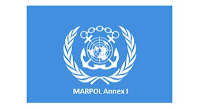General Requirement:
- This regulation comes under MARPOL Annex I, Chapter 3 - Requirements for Machinery Spaces of All Ships, Part A - Regulation 12, it applies to every ship of 400 gross tonnages and above.
- Oil residue may be disposed of directly from the oil residue tanks to reception facilities through the standard discharge connections.
- Any other approved means of disposal of oil residues, such as an incinerator, Auxiliary Boiler suitable for burning oil residues or other acceptable means may be followed which are prescribed in the Supplement to IOPP Certificate Form A or B.
Oil Residue Tank(s) or Sludge Tank(s) (Requirements w.r.t. MEPC.1/Circular.867):
- Oil Residue tanks shall be of adequate capacity considering the type of machinery and length of the voyage so as to receive the oil residues generated onboard.
- Oil Residue tanks shall be provided with a designated pump that is capable of taking suction from the oil residue tanks for disposal of oil residue.
- The designated pumps provided for Oil residue tanks should be of a suitable type, capacity and discharge head, considering the characteristics of the liquid being pumped and the size and position of tanks and overall discharge times.
- Oil Residue tanks shall not be arranged with any pipings that have a direct connection overboard, other than standard discharge connection.
- Ships having piping to and from Oil residue tanks to overboard discharge outlets that are installed prior to 4 April 1993, other than standard discharge connection shall be blanked and sealed as required by Regulation 12.3.4 of MEPC.1/Circular.867
- Oil Residue tanks shall be designed and constructed so as to facilitate their cleaning and the discharge of residues to reception facilities.
- Sufficient man-holes should be provided in the Oil Residue tanks so that, all parts of the tanks can be reached to facilitate cleaning and inspection.
- Oil residue tanks all have no direct connections to the bilge system, oily bilge water holding tank(s), tank tops or oily water separators, except that:
- The tanks may be fitted with drains, with manually operated self-closing valves and arrangements for subsequent visual monitoring of the settled water, that lead to an oily bilge water holding tank or bilge well, provided such arrangement does not connect directly to the bilge discharge piping system
- The sludge tank discharge piping and bilge-water piping may be connected to common piping leading to the standard discharge connection provided it shall not allow any intermixing of sludge to the bilge systems.
- Oil residue tanks should be fitted with adequate heating arrangements or other suitable means to facilitate the pump for the ability and discharge of tank content.
Reference:
IMO Publications & Documents - International Conventions - MARPOL - Annex I
IMO Publications & Documents - Circulars - Marine Environment Protection Committee - MEPC.1/Circular.867







0 Comments
Thanks for your Valuable comments and Suggestions